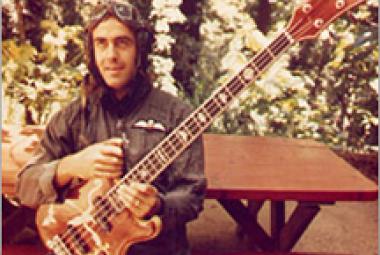Lenny Kaye (born December 27, 1946) is an American guitarist, composer and writer who is best known as a member of the Patti Smith Group. As musician, writer, and record producer, Lenny Kaye has been intimately involved with an array of artists and bands. He has been a guitarist for poet-rocker Patti Smith since her band’s inception in 1974, and is the co-author of Waylon, The Life Story of Waylon Jennings. His seminal anthology of sixties’ garage-rock, Nuggets, has long been regarded as defining a genre. You Call It Madness: The Sensuous Song of the Croon, an impressionistic study of the romantic singers of the 1930s, was published by Villard/Random House in 2004. (More from Wikipedia)
Patti Smith began performing rock music in 1974 – another year that popular music changed irrevocably, much like 1963 with the Beatles and the rest of the British Invasion – with music archivist and guitarist Lenny Kaye. While not actually inventing the term “punk rock”, he had popularized it in his liner notes for the first compilation album of garage rock and psychedelic rock music, Nuggets, so this was most appropriate.
The band that became the Patti Smith Group was created when Ivan Kral (guitar and bass), Jay Dee Daugherty (drums) and Richard Sohl (piano) joined Patti Smith and Lenny Kaye. The piano player’s name is fitting, since his understated work at the ivories is in many ways the soul of the Patti Smith Group. The proto-punk band Iggy and the Stooges added Scott Thurston as a frantic pianist in 1973, but a keyboard player in a punk rock band is rare.
Many years ago, I wrote of Patti Smith that she resembled nothing so much as the Beat poets of the 1950’s; but that really is only one side of her music persona. She is a rocker pure and simple as well as a poet and a first-rate vocalist and one hell of a writer besides.
(February 2014)
* * *















